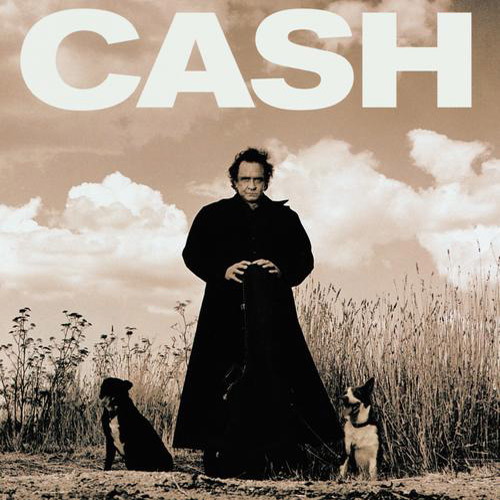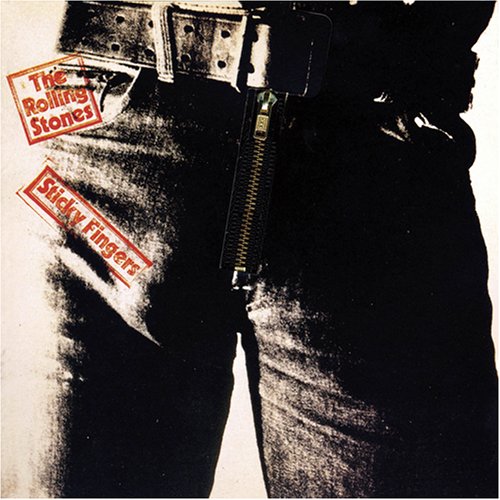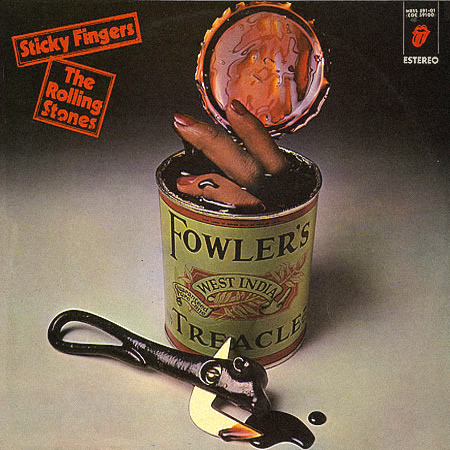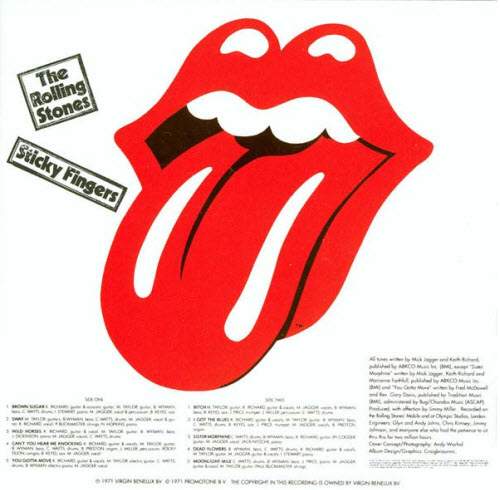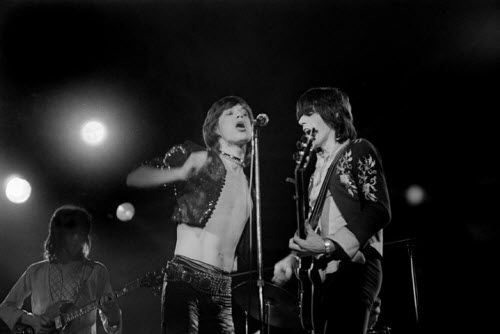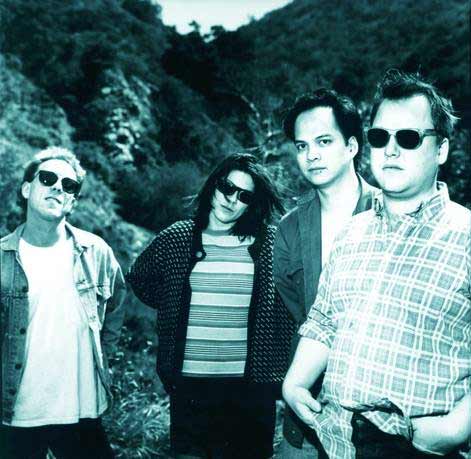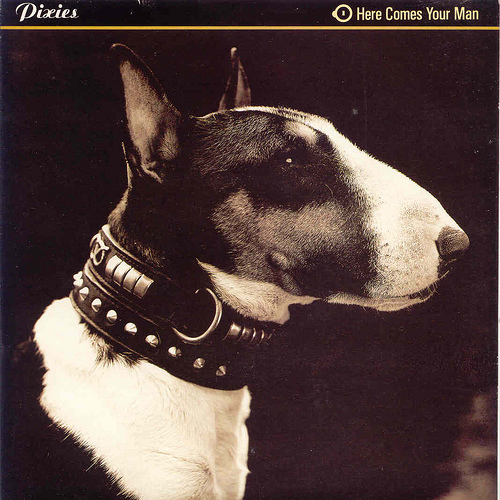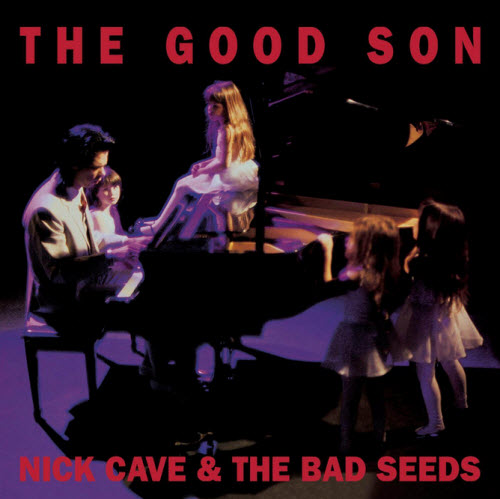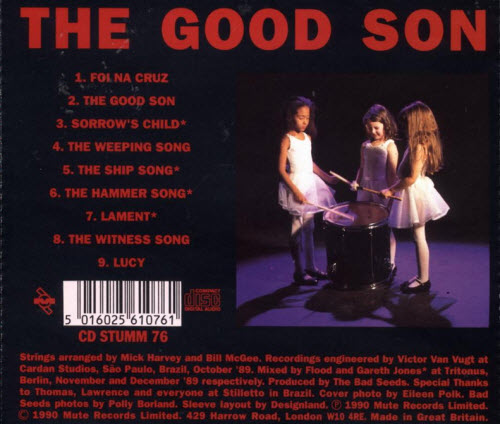…Always, the choice of material is a revelation. The Beast In Me (written by former son-in-law, Nick Lowe) could be autobiographical. And while writers like horrorpunk figurehead Glenn Danzig or Tom Waits probably would never have figured on his radar were it not for Rubin; time and again the duo found songs that were, in Cash’s hands, to take on new life. This willingness to experiment was to set a precedent: Subsequent albums were to see him work magic on material from Nine Inch Nails to U2 and Depeche Mode. But Johnny Cash’s final road to redemption and artistic fulfillment starts here…
~Chris Jones (bbc.co.uk)American Recordings did something very important — it gave Cash a chance to show how much he could do with a set of great songs and no creative interference, and it afforded him the respect he’d been denied for so long, and the result is a powerful and intimate album that brought the Man in Black back to the spotlight, where he belonged.
~Mark Deming (allmusic.com)
#1 – Delia’s Gone
Wikipedia:
| Released | April 26, 1994 |
|---|---|
| Recorded | May 17, 1993 – December 7, 1993 |
| Genre | Country, country folk, americana, folk rock |
| Length | 42:45 |
| Label | American/ Sony |
| Producer | Rick Rubin |
American Recordings is the 81st album by the country singer Johnny Cash. It was released in April 1994, the first album issued by American Recordings after its name change from Def American, the album being named after the new label. In 2003, the album was ranked number 364 on Rolling Stone magazine’s list of the 500 greatest albums of all time.
Cash was approached by producer Rick Rubin and offered a contract with Rubin’s American Recordings label, better known for rap and heavy metal than for country music. Under Rubin’s supervision, he recorded the album in his living room, accompanied only by his guitar. For years Cash was often at odds with his producers after he had discovered with his first producer, Sam Phillips, that his voice was better suited to a stripped-down musical style. Most famously he disagreed with Jack Clement over his sound, Clement having tried to give Cash’s songs a “twangy” feel and to add strings and barbershop-quartet-style singers. His successful collaboration with Rick Rubin was in part due to Rubin seeking a minimalist sound for his songs.
#3 – The Beast In Me:
The songs “Tennessee Stud” and “The Man Who Couldn’t Cry” were recorded live at the Viper Room, a Sunset Strip, Los Angeles nightclub owned at the time by Johnny Depp. “The Beast in Me” was written and originally recorded by Cash’s former stepson-in-law Nick Lowe.
The video for the first single, the traditional song “Delia’s Gone” (directed by Anton Corbijn, featuring Kate Moss), was put into rotation on MTV, and even appeared on Beavis and Butt-head, Beavis asking if Cash was Captain Kangaroo. The album was hailed by critics and many declared it to be Cash’s finest album since the late 1960s, while his versions of songs by more modern artists such as Tom Waits and Glenn Danzig (who penned a song called “Thirteen” specifically for Cash, in just twenty minutes) helped to bring him a new audience. American Recordings received a Grammy for Best Contemporary Folk Album of the Year at the 1994 Grammy Awards. The album cover was photographed whilst Cash was visiting Australia, at Werribee near Melbourne.
 Johhny Cash & Rick Rubin in studio
Johhny Cash & Rick Rubin in studio
#5 – Why Me Lord:
Track listing:
- “Delia’s Gone” (Karl Silbersdorf, Dick Toops) – 2:18
- Originally recorded by Cash for The Sound of Johnny Cash (1962)
- “Let the Train Blow the Whistle” (Cash) – 2:15
- “The Beast in Me” (Nick Lowe) – 2:45
- Originally recorded by Lowe for The Impossible Bird (1994)
- “Drive On” (Cash) – 2:23
- “Why Me Lord” (Kris Kristofferson) – 2:20
- Originally recorded by Kristofferson for Jesus Was a Capricorn (1972)
- “Thirteen” (edit) (Glenn Danzig) – 2:29
- Full-length version appears on Disc 5 of the Unearthed Box Set. Written by Glenn Danzig for Cash. Later recorded by Danzig for Danzig 6:66 Satan’s Child (1999)
- “Oh, Bury Me Not (Introduction: A Cowboy’s Prayer)” (John Lomax, Alan Lomax, Roy Rogers, Tim Spencer) – 3:52
- Originally recorded by Cash for Sings the Ballads of the True West (1965)
- “Bird on a Wire” (Leonard Cohen) – 4:01
- Originally recorded by Cohen for Songs from a Room (1969)
- “Tennessee Stud” (live) (Jimmy Driftwood) – 2:54
- Originally a hit single for Eddy Arnold (1959)
- “Down There by the Train” (Tom Waits) – 5:34
- Written by Waits for Cash. Later released by Waits on his Orphans: Brawlers, Bawlers & Bastards rarities collection.
- “Redemption” (Cash) – 3:03
- “Like a Soldier” (Cash) – 2:50
- “The Man Who Couldn’t Cry” (live) (Loudon Wainwright) – 5:03
- Originally recorded by Wainwright for Attempted Mustache (1973)
Personnel:
- Rick Rubin – producer
- Johnny Cash – acoustic guitar, vocals, main performer, liner notes
- Jim Scott – mixing
- David Ferguson – sound recordist
- Stephen Marcussen – mastering
- Christine Cano – design
- Martyn Atkins – art director, photographer
Playlist of the day:
Other APR-26:
Continue reading Today: Johnny Cash released American Recordings in 1994 – 19 years ago

